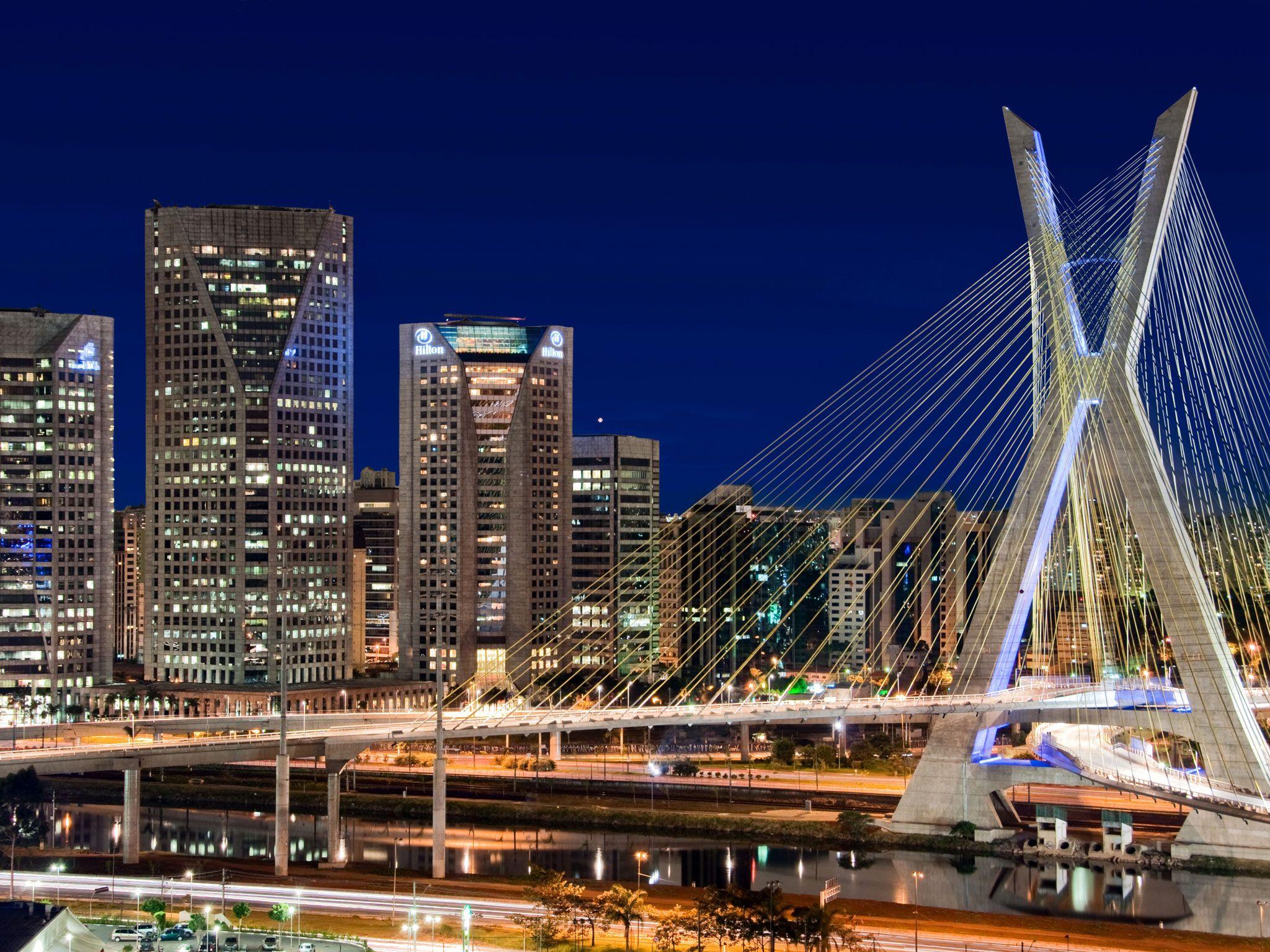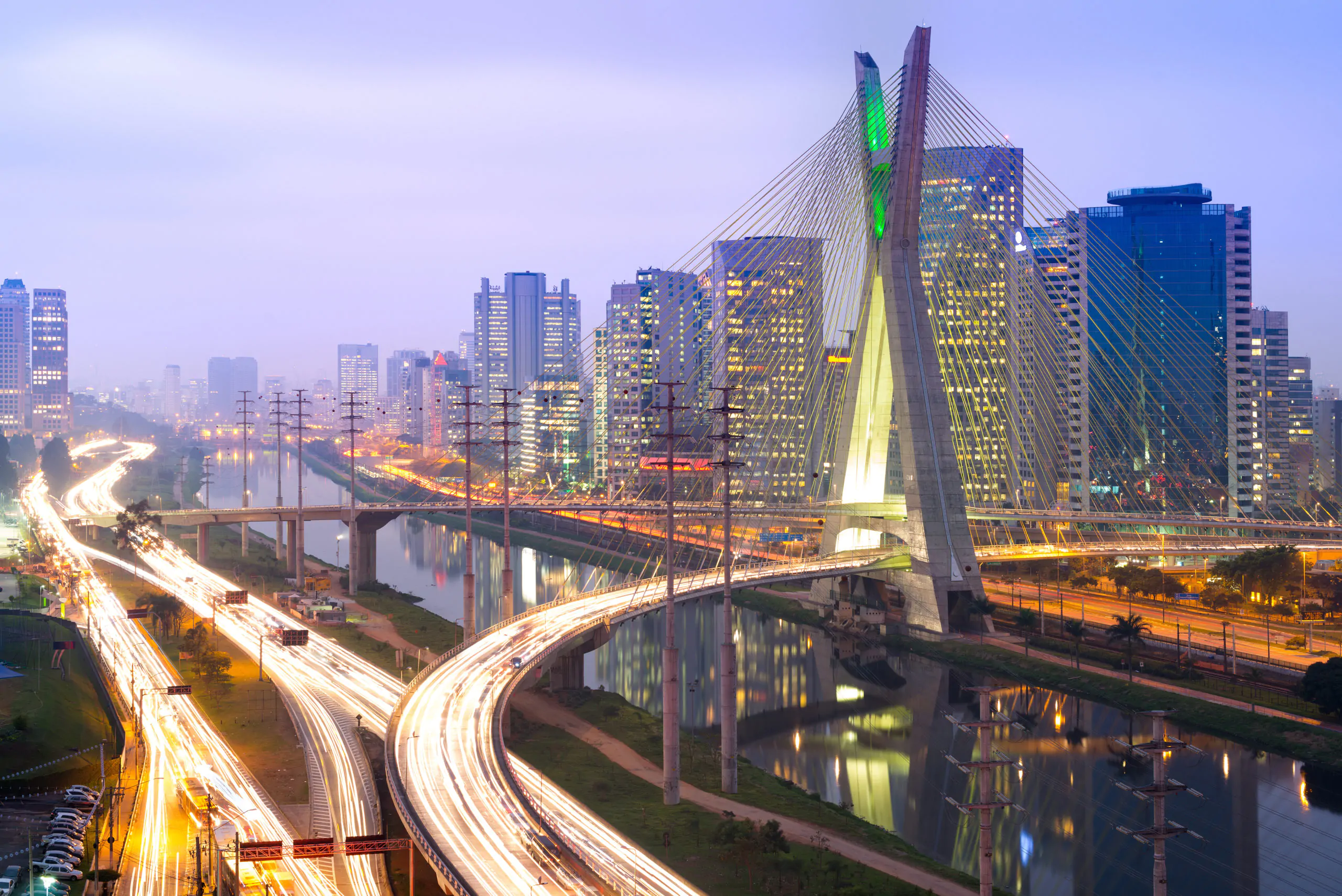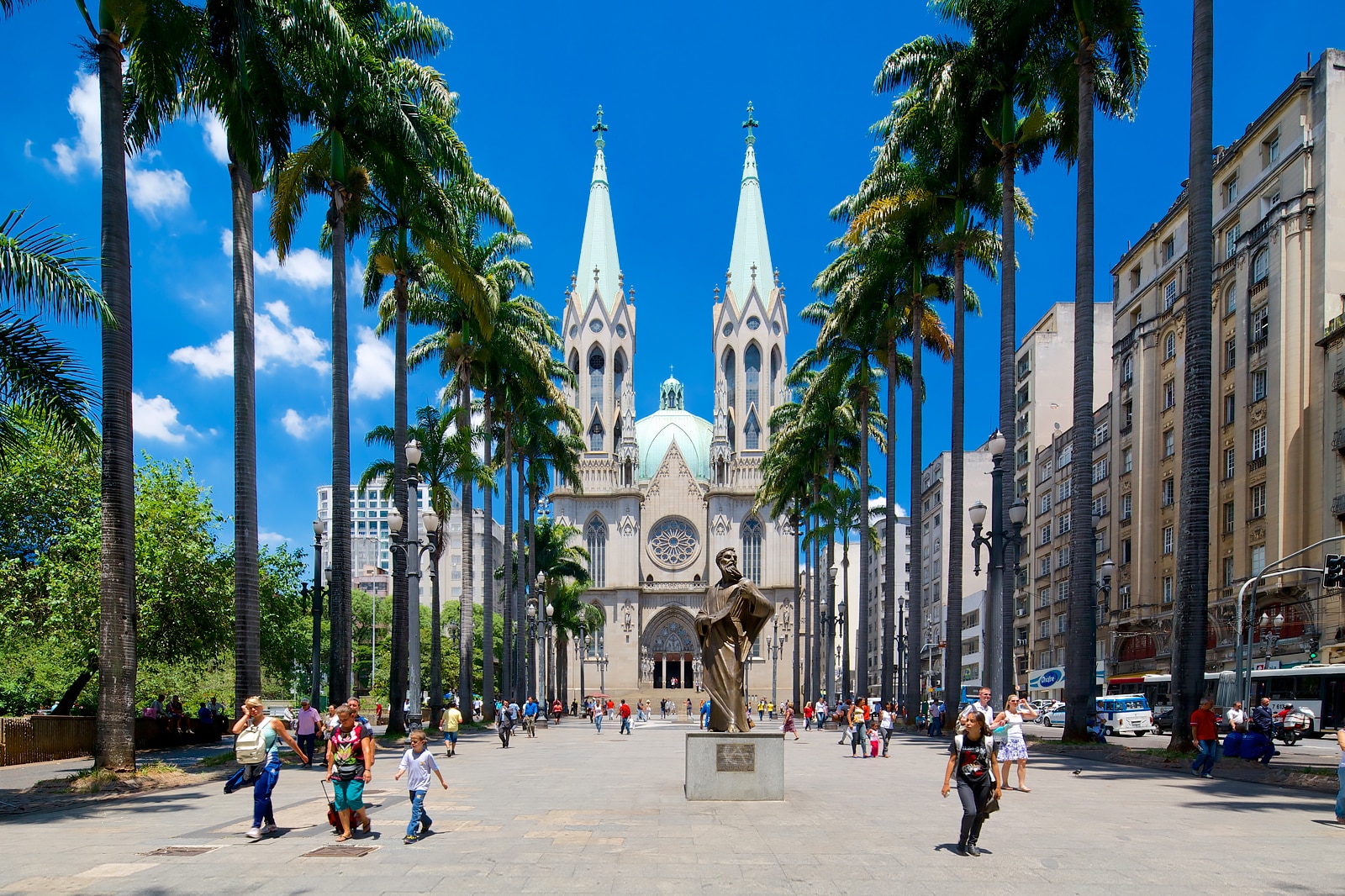Sao Paulo: Sao Paulo Brazil

Sao Paulo, a sprawling metropolis in southeastern Brazil, is a testament to the country’s dynamic history and cultural tapestry. Its evolution from a humble village to a vibrant global hub is a story of resilience, innovation, and a relentless pursuit of progress.
Historical Evolution
Sao Paulo’s journey began in 1554, when Jesuit priests established a small settlement called “Piratininga” near the banks of the Tiete River. The region was strategically located for trade, attracting settlers and merchants, and the city gradually expanded. A key turning point arrived in the late 19th century with the discovery of coffee, which transformed Sao Paulo into a major coffee-producing center. The coffee boom fueled rapid urbanization, attracting waves of immigrants from Europe and Asia, and shaping the city’s diverse cultural landscape.
Cultural Influences
Sao Paulo is a melting pot of cultures, reflecting its history as a destination for migrants from around the world. This diversity is evident in its culinary scene, with influences from Italy, Japan, Lebanon, and many other countries. From traditional Brazilian dishes like “feijoada” to international favorites like sushi and pasta, Sao Paulo offers a wide array of culinary experiences. The city’s music scene is equally vibrant, with genres ranging from samba and bossa nova to rock and electronic music. Sao Paulo is also home to renowned museums, theaters, and art galleries, showcasing the works of both local and international artists.
Economic Landscape
Sao Paulo is the economic powerhouse of Brazil, driving the country’s industrial and financial sectors. Its major industries include finance, manufacturing, technology, and services. The city’s entrepreneurial spirit is evident in its thriving startup ecosystem, attracting investors and fostering innovation. Sao Paulo’s strategic location and well-developed infrastructure have made it a major hub for international trade and commerce. The city is a gateway to Latin America, connecting businesses and investors from around the world.
Exploring Sao Paulo’s Landmarks and Attractions

Sao Paulo, a bustling metropolis in Brazil, boasts a captivating blend of modern marvels and historical treasures. From architectural masterpieces to vibrant cultural institutions, the city offers a kaleidoscope of experiences that entice visitors from around the globe.
Iconic Landmarks, Sao paulo brazil
Sao Paulo’s skyline is punctuated by a collection of iconic landmarks that reflect the city’s rich history and architectural evolution.
- The Catedral da Sé, a neo-Gothic masterpiece, stands as a testament to the city’s Catholic heritage. Its soaring twin towers and intricate stained glass windows create an awe-inspiring atmosphere. Construction began in 1913 and was completed in 1954, making it one of the largest Catholic churches in Latin America.
- The Edifício Copan, a modernist masterpiece designed by Oscar Niemeyer, is a testament to the city’s architectural innovation. Its serpentine form, inspired by the Amazon River, is a striking contrast to the surrounding cityscape.
- The Museu de Arte de São Paulo Assis Chateaubriand (MASP), known as MASP, is a renowned art museum housed in a distinctive building designed by Lina Bo Bardi. Its cantilevered structure, supported by two massive concrete pillars, offers panoramic views of the Paulista Avenue.
- The Pinacoteca de São Paulo, housed in a restored 19th-century building, showcases a diverse collection of Brazilian art, encompassing various periods and styles.
Arts and Culture
Sao Paulo is a vibrant hub for arts and culture, offering a plethora of museums, theaters, and cultural institutions.
- The Museu de Arte Moderna de São Paulo (MAM), known as MAM, is a renowned museum of modern and contemporary art, showcasing a wide range of artistic expressions.
- The Teatro Municipal de São Paulo, a grand opera house designed in the early 20th century, hosts world-class performances of opera, ballet, and classical music.
- The Instituto Moreira Salles, a cultural center dedicated to promoting Brazilian art and culture, houses a library, an archive, and a museum showcasing photography, music, and film.
- The SESC Pompeia, a cultural center known for its innovative programming, offers a wide range of activities, including theater, dance, music, and visual arts.
Neighborhoods
Sao Paulo is a city of diverse neighborhoods, each with its unique character and attractions.
- Vila Madalena, a bohemian neighborhood known for its vibrant street art, trendy cafes, and independent boutiques, is a haven for artists and creative individuals.
- Liberdade, a historic neighborhood with a strong Japanese influence, is home to bustling markets, traditional restaurants, and cultural institutions.
- Pinheiros, a trendy neighborhood known for its upscale restaurants, chic boutiques, and vibrant nightlife, is a hub for young professionals and foodies.
- Ibirapuera Park, a sprawling green space in the heart of the city, offers a welcome escape from the urban bustle. Its diverse landscape includes gardens, museums, and a lake, making it a popular destination for relaxation and recreation.
Living and Experiencing Sao Paulo

Sao Paulo, a city brimming with energy and diversity, offers a unique and vibrant lifestyle that seamlessly blends cosmopolitan charm with authentic Brazilian spirit. From its pulsating nightlife to its diverse culinary scene and lively social gatherings, the city provides a tapestry of experiences for every taste and preference.
Nightlife in Sao Paulo
Sao Paulo’s nightlife is legendary, offering a wide array of entertainment options that cater to various tastes. The city is renowned for its vibrant club scene, featuring world-class DJs and live music performances. From chic rooftop bars with panoramic views to intimate jazz clubs and underground electronic music venues, the city’s nightlife pulsates with energy.
Dining Options in Sao Paulo
Sao Paulo is a culinary paradise, boasting a diverse array of dining options that reflect the city’s multicultural heritage. From traditional Brazilian cuisine to international fare, the city offers a gastronomic adventure for every palate. Street food is an integral part of the city’s culinary scene, with vendors offering a variety of delicious and affordable snacks, from pastel (fried pastries) to coxinha (chicken croquettes).
Social Scene in Sao Paulo
Sao Paulo’s social scene is as diverse as its population, with a wide range of activities and events that cater to different interests. The city is home to numerous museums, art galleries, theaters, and cultural centers, offering a vibrant cultural scene. From bustling markets and festivals to intimate gatherings and social clubs, Sao Paulo provides ample opportunities for socializing and connecting with locals.
Transportation System in Sao Paulo
Sao Paulo’s transportation system is extensive and efficient, providing a range of options for getting around the city. The city’s metro system is one of the most extensive in the world, connecting various neighborhoods and attractions. Buses are another popular mode of transportation, offering a comprehensive network that covers most areas of the city. Taxis are readily available, and ride-sharing services like Uber and 99 are also popular options.
Local Customs and Traditions in Sao Paulo
Sao Paulo is a melting pot of cultures, with a rich tapestry of traditions and customs. It is important for visitors and expats to be mindful of local customs and etiquette.
- Greetings: Brazilians are generally warm and welcoming, and it is customary to greet people with a handshake or a kiss on the cheek.
- Punctuality: While Brazilians are generally relaxed about time, it is still considered polite to be on time for appointments and meetings.
- Dress Code: Sao Paulo is a fashionable city, and people tend to dress well, even for casual occasions. However, it is always a good idea to dress appropriately for the occasion.
- Language: Portuguese is the official language of Brazil, and while English is spoken in some tourist areas, it is helpful to learn a few basic Portuguese phrases.
- Tipping: Tipping is customary in restaurants, bars, and hotels. A tip of 10% is generally considered appropriate.
- Bargaining: Bargaining is not typically done in stores or restaurants. However, it is sometimes possible to negotiate prices at street markets and flea markets.
Sao paulo brazil – Sao Paulo, a bustling metropolis in Brazil, is known for its vibrant culture and towering skyscrapers. It’s fascinating to see how cities like Sao Paulo are tackling urban challenges, much like how Mayor Tiffany Henyard is leading innovative initiatives in her own community.
Her commitment to progress reminds us that even in a city as grand as Sao Paulo, strong leadership can make a real difference.
Sao Paulo, a bustling metropolis in Brazil, is a hub for both domestic and international travel. Connecting these destinations are various aircraft, including the versatile ATR 72 plane , known for its efficiency on shorter routes. From the bustling streets of Sao Paulo, travelers can easily reach smaller cities and charming towns across the vast Brazilian landscape.
